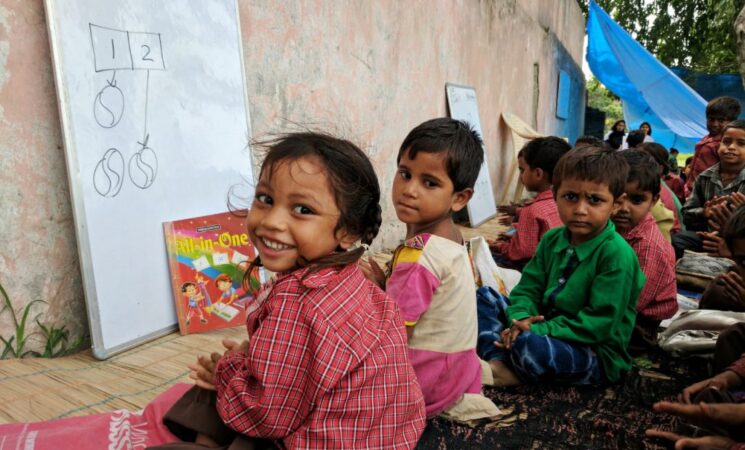1 September 2022, NIICE Commentary 8230
Saroj Deo
Nearly 30 million South Asian children are not enrolled in school, according to UNICEF's Regional Office for South Asia and the UNESCO Institute for Statistics (UIS). Out of 30 million, nearly 5 million are in Bangladesh, Bhutan and Nepal. According to the Universal Declaration of Human Rights, education is a fundamental human right for everyone, and this right is further detailed in the Convention against Discrimination in Education. The Government of Nepal’s economic survey reports shows that two-thirds of grade one students drop out by grade 12, the final year of school. The retention rate in grade one is 64.6 percent out of 100 students enrolled. By the time they reach the tenth grade, 36 students have dropped out. Similarly, the percentage of children enrolled in Bangladesh, Bhutan, and Nepal is nearly 85 percent, 96.7 percent, and 97 percent, respectively, while the percentage of children who are not enrolled is nearly 4.3 million, 3.5 percent of the total, and 0.77 million, respectively. Despites, recent progress in enrolment, girls remain far less than boys.
Children at risk of dropping out are more likely to appear as a result of potential barriers and difficulties for the children and their families, such as disability, poor grades, poor economic conditions, conflict, and so on. Aside from these factors, the government’s lack of appropriate policy, budget, and clear guidelines is also exacerbating the situation. The number of previously enrolled children determines the prevalence of dropouts. Dropouts have a negative impact on a country’s social, political, environmental, and economic development.
Reasons and Risks of Children Dropout
School dropout and children who are out of school are not a separate incident happening on its own, but there are processes and reasons involved with certain conditions and circumstances that compels a student to drop out or stay out of school. There are numerous reasons why children are out of school or at risk of dropping out. The reasons are classified into four categories:1) Individual or child-level: poor health, malnutrition, disability, lack of motivation, early marriage and pregnancy, poor results, language barriers, and negative peer influence; 2) Child labour, poverty, migration, parental education, and parental unwillingness at the household or family level; 3) A lack of proper resource utilisation, a lack of quality education, a lack of quality-child-friendly teaching methods, bias among children based on caste, class, and appearance, a weak teacher-parent relationship, teacher absenteeism, school location, and poor educational provision exist at the school level and 4. Government Level: Inadequate budget allocation, biased social practises, inadequate school infrastructure, uncontrolled population growth, unequal access to education, a lack of clean and drinking water, conflict and migration, security issues and lack of proper toilet for girls, geographical isolation and lack of access to school, a lack of tailor-made policy, and a weak monitoring and evaluation policy.
Programmes Implemented to Mitigate Problems
Many programmes and policies have been drafted and implemented by the governments of these countries, but they are insufficient for the effectiveness and scalability of programmes for children who are out of school and at risk of dropping out in Bangladesh, Bhutan, and Nepal. Some of the programmes that have been implemented to encourage children’s education in Nepal include free mid-day lunch in the majority of districts, free sanitary pads for approximately 1.35 million girls, and scholarships for girls and students from marginalised communities. Similarly in Bangladesh, the students who are studying in class-I to IV receive Taka 3,600 each annually as grants while class-V to class-VII students get Taka 4,800 each, Taka 9,000 grant is being given annually to girl students who have been studying from class-VIII to X, particularly the girls living in urban slums have been receiving educational grants under the Livelihood Improvement of Urban Poor Communities (LIUPC) Project, being implemented by Local Government Division and supported by UNDP. In the same way, although there is free education in Bhutan, a basic education scholarship is provided to poor students whose family cannot afford the basic cost of their children.
The study suggests that administrative policymakers should ensure that free education programmes, reducing paid coaching, lowering the cost of private school, raising awareness of parent-teacher relationships, improving school infrastructure, ensuring equal access to education, providing quality training for teachers, and providing all related facilities are implemented at the policy level. However, as evidenced by the average scholarship amount given to Nepali students, which is less than NPR 1,000 per year, these are insufficient. This is not enough to persuade parents to send their children to school.
Recommendations
The problems existing at all levels. Therefore, it is crucial to work on its effectiveness and the scalability of existing programs. Furthermore, it is also significant to do in-depth research to resolve existing problems and come up with tailor-made programs and policies to address the existing problems at all levels in different geographical areas. The following are the activities which could help for effectiveness and scalability of the programs: reformation of school policy, provide adequate physical facilities and the education materials, schedule based training to teachers and awareness programs among parents, enhance teacher quality-child-friendly teaching methods, introduce alternative education provision for dropouts, encourage local and female teacher, implementing two language (for instance national language and mother tongue) system as a medium of instruction, reformation of education policy, tailor-made programs should be promoted at different geographical regions, place, school and the community as they have their own types of problems, the disability friendly infrastructures or separate school for disable students, and improvement in information, communication and the technology will play remarkable role to motivate children and their parents and create favourable environment to join and retain children’s education.
Saroj Deo is Research Associate at NIICE.

